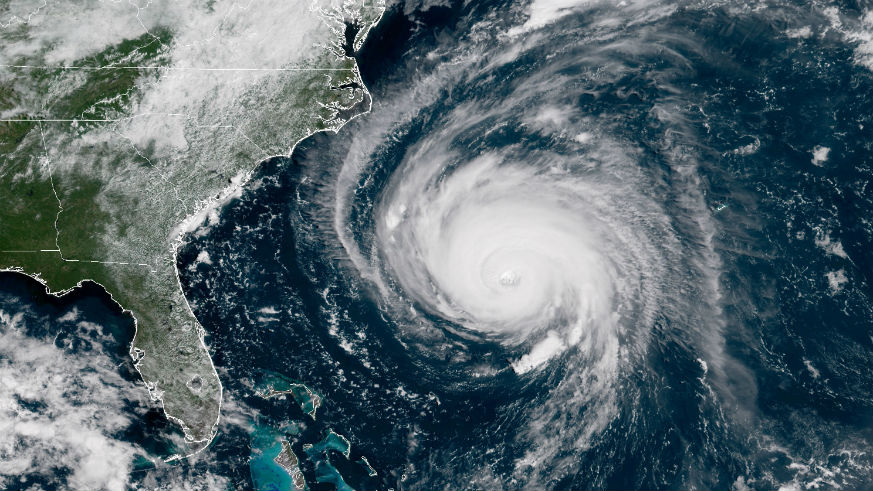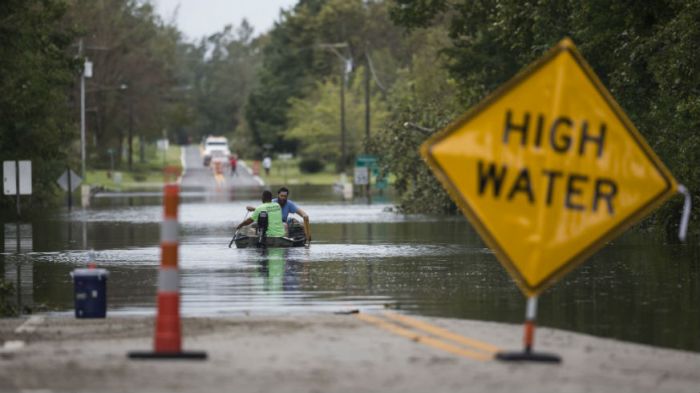Hurricane vs typhoon, what’s the difference?
As Hurricane Florence continues to slam parts of the United States and typhoon Mangkhut closes in on the Philippines, the two high impact storms are causing major damage and are forcing residents to evacuate their homes to avoid the path of the storms.
Hurricane Florence is making its way through parts of North Carolina with heavy rainfall, flooding and steady wind gusts of up to 100 miles per hour. Hurricane Florence has already hit parts of Virginia, Maryland and Georgia and is expected to deliver heavy rains and powerful winds in other parts of the East Coast.
The Philippines is preparing for Super Typhoon Mangkhut and thousands of people are already being evacuated from their homes on Friday. The New York Times reports that the storm is more than 550 miles wide with sustained wind speeds up to 170 miles per hour.
Hurricane vs Typhoon differences
You may have heard the words hurricane or typhoon to describe extremely powerful storms, but are the two different?
According to the National Oceanic and Atmospheric Administration (NOAA), both hurricanes and typhoons are tropical cyclones. The organization defines a tropical cyclone as a “rotating, organized system of clouds and thunderstorms that originates over tropical or subtropical waters and has closed, low-level circulation.”
While both types of storms form over tropical oceanic waters, have the same spiraling wind system, and have the ability to cause severe damage and are measured on the same storm sale, there are two differences between hurricanes and typhoons.
The main difference between hurricanes and typhoons is its geographical locations.
Hurricanes occur in the Atlantic and North Pacific parts of the world and typhoons take place in the Northwest Pacific. Typically, these types of storms can form between June and November but have been known to form outside of this timeframe.
The other difference between a hurricane and a typhoon is the intensity of the storm’s winds.
Hurricane vs Typhoon: Which is stronger?
According to the American National Red Cross, typhoons are considered to be stronger and can happen more frequently than hurricanes, due to the warmer weather conditions where typhoons originate. Although typhoons are more intense than hurricanes, they cause less damage overall because of their geographical location.
What is the Saffir-Simpson Hurricane Wind Scale, storm category chart?
When meteorologists describe hurricanes and typhoons they use the Saffir-Simpson Hurricane Scale to categorize the storms.
According to The National Hurricane Center (NHC), a hurricane is given a 1 to 5 rating based on a hurricane’s sustained wind speed.

Tropical Depression — 0 to 38 mph winds
Tropical Storm — 39 to 73 mph
Category 1 — 74 to 95 mph
Category 2 — 96 to 110 mph
Category 3 — 111 to 129 mph
Category 4 — 130 to 56 mph
Category 5 — equal or greater than 157 mph
























